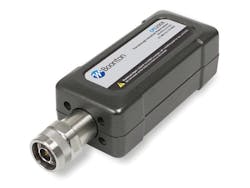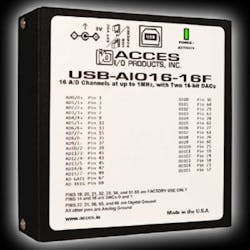Amid increasing demand for smaller form factors and mobility for in-field instruments in electronic test & measurement instruments, the role of USB instruments continues to grow. Whether it’s a USB-based vector network analyzer, RF power meter, data acquisition system, oscilloscope, or digital multimeter, universal serial bus technology enables the creation of cost-effective and compact test solutions. The benefits that the USB standard offers instrumentation include the ability to be placed directly on a connection to be measured, and the ability to be powered only by USB power.
The development of USB technology began in 1994, and its first specification—USB 1.0—was introduced in 1996 with defined data transfer rates of 1.5 Mbit/s low speed and 12 Mbit/s full speed. USB 2.0 was released in 2000 and ratified more than a year later, speeding up to 480 Mbit/s. The USB 3.0 specification was released in November 2008, with subsequent 3.1 and 3.2 specifications published in December 2014 and September 2017, respectively. Most recently, USB 3.2 preserved 3.1’s SuperSpeed (5 Gbit/s) and SuperSpeed+ (10 Gbit/s maximum) transfer modes, while introducing two new SuperSpeed+ transfer modes over the USB-C connector with data rates of 10 and 20 Gbit/s (1250 and 2500 MB/s).
Currently, there are no official proposals for a USB 4.0 specification. But rumors suggest 4.0’s transfer rates would be approximately 10,000 MBps—10 times that of its predecessor. As for when we can expect to see 4.0 introduced, most market experts estimate between 2020-2021. USB 3.0 figures to have staying power for a while, as there are still relatively few devices capable of saturating a 3.0 connection.
Let’s take a look at some recent product innovations in USB instrumentation.
New family of low-cost USB analog modules
Six-slot modular USB/LXI chassis
100 kHz to 18 GHz Compact USB VNA
USB-based power sensors
About the Author





